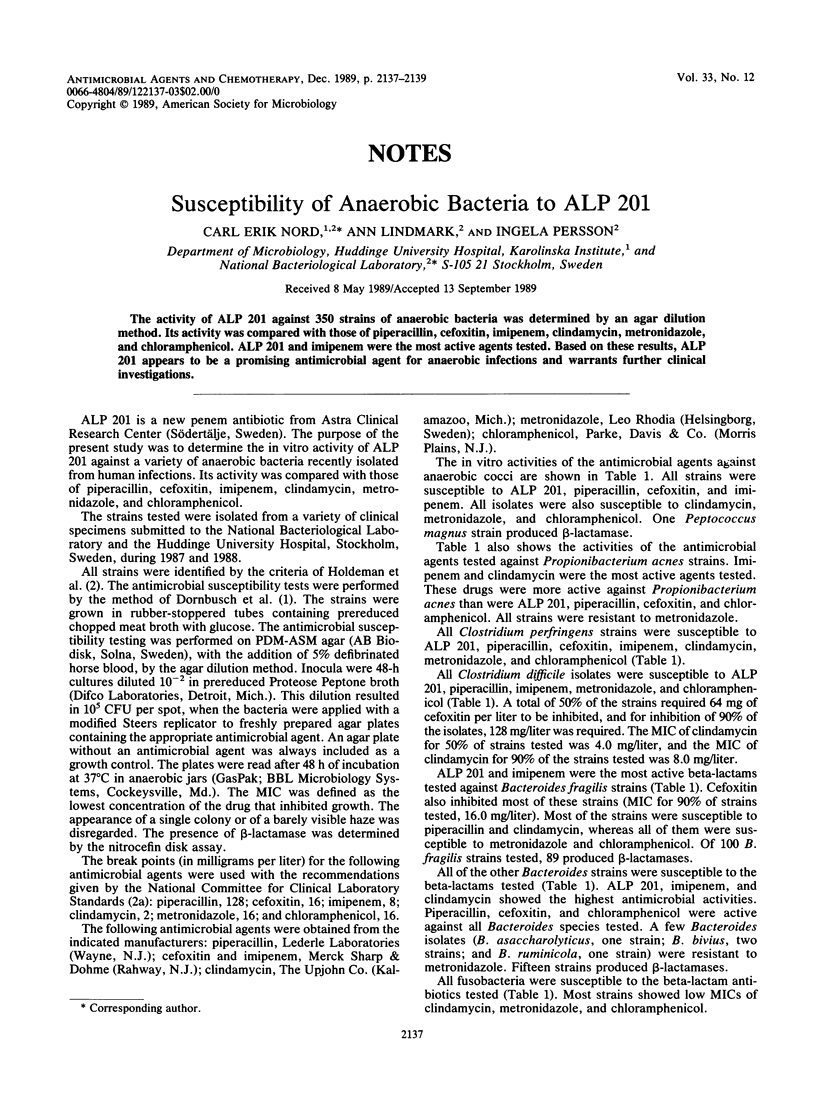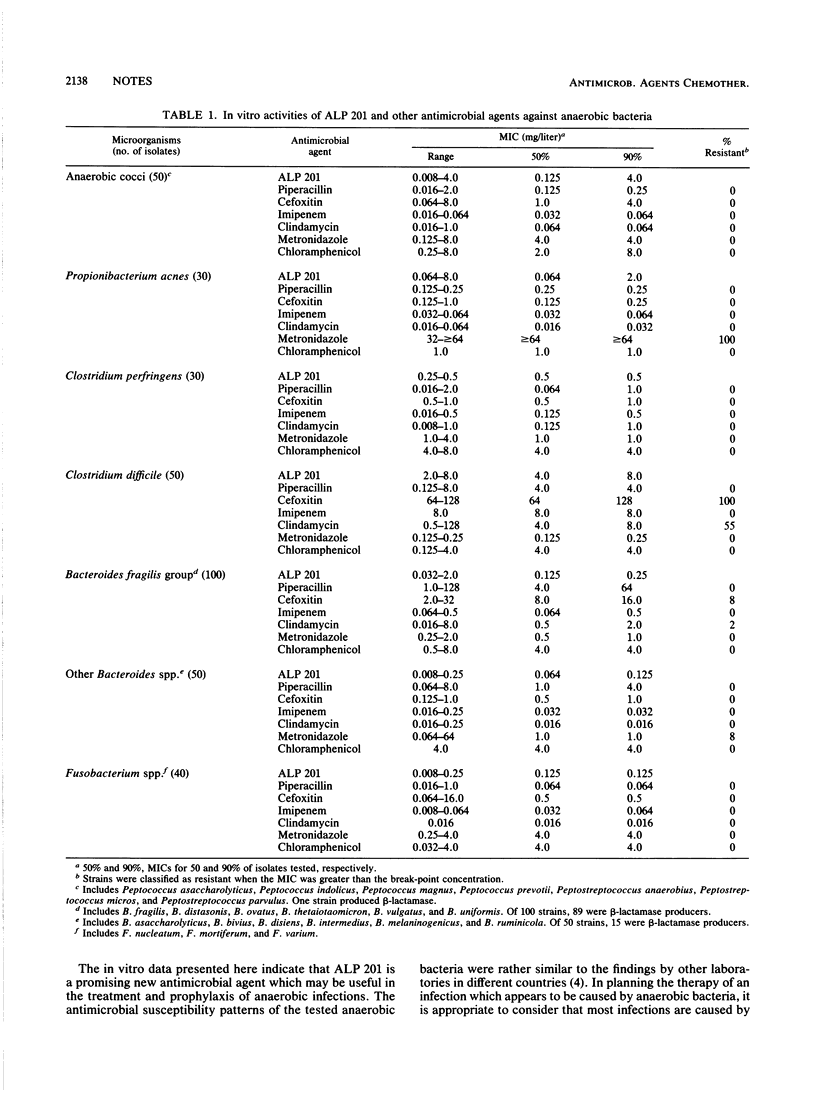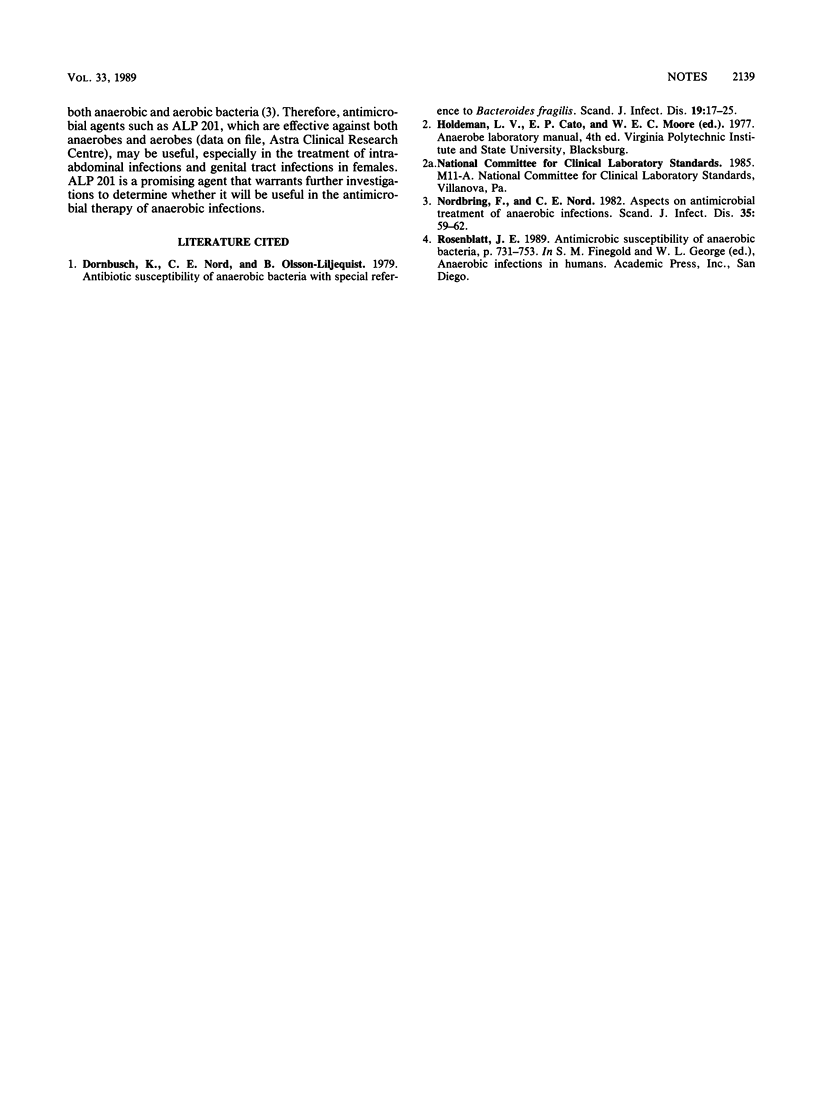Abstract
The activity of ALP 201 against 350 strains of anaerobic bacteria was determined by an agar dilution method. Its activity was compared with those of piperacillin, cefoxitin, imipenem, clindamycin, metronidazole, and chloramphenicol. ALP 201 and imipenem were the most active agents tested. Based on these results, ALP 201 appears to be a promising antimicrobial agent for anaerobic infections and warrants further clinical investigations.
Full text
PDF


Selected References
These references are in PubMed. This may not be the complete list of references from this article.
- Dornbusch K., Nord C. E., Olsson-Liljeqvist B. Antibiotic susceptibility of anaerobic bacteria with special reference to Bacteroides fragilis. Scand J Infect Dis Suppl. 1979;(19):17–25. [PubMed] [Google Scholar]
- Nordbring F., Nord C. E. Aspects on antibacterial treatment of anaerobic infections. Scand J Infect Dis Suppl. 1982;35:59–62. [PubMed] [Google Scholar]


